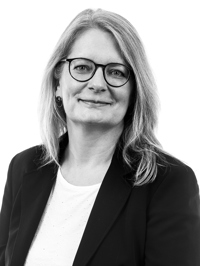Secure data transfer from patient to staff
Having to attend repeated consultations at the hospital can be strainful for a patient with a chronic illness. Patients with heart failure might postpone a medicine control due to exhaustion, meaning that their medicine will not be adjusted as it ought to.
PROJECT PERIOD
Start: December 2019
End: June 2021
It would benefit many of these patients to replace some of the outpatient consultations with video consultations in which the health staff have access to objective data from wearables (wireless technology that the patient wears on part of their body) which the patient uses for measurements at home. But for that to work, a safe and smooth data integration is crucial.
AIM
The aim of the project was to make it possible to send data securely from the wearable technology to the hospital staff and make it easy for the staff to access it during or prior to video consultations.
The project was carried out in two departments with different patient groups.
At the Department of Internal Medicine and Acute Medicine at Svendborg Hospital, patients with heart failure were given an ECG monitor (electrocardiography). The data from the monitor was sent to the hospital staff via the app My Hospital.
Parenterally nourished patients at the Department of Gastroenterology at Odense University Hospital (OUH) were given a suitcase with different devices including a wearable ear sensor for measuring respiration rate, oxygen saturation and temperature, a scale and a blood sugar monitor. Through video consultations, the staff could observe whether there was an infection around the catheter inserted for nutrition.
The project ensured that data was sent securely from the devices through the My Hospital app to the electronic patient record, from which the staff can access the information.
RESULTS
At the Department of Gastroenterology, there were technical problems with the ear sensor and its measurements, and the project was not implemented afterwards.
The project was a success at the Department of Internal Medicine and Acute Medicine, and both patients, staff and the hospital management wished to keep the solution afterwards. The solution especially carried three benefits:
- The patient can stay at home where they will not be exposed to unnecessary infection risks.
- The patient does not have to spend time and energy on transport to and from the hospital when they can measure themselves at home and consult the hospital staff via video.
- The patient feels more secure in their treatment when they can measure their cardiac function daily and the hospital staff keeps track of the measurements.
It is the department’s expectation that home measuring helps the patient to get more insight in their own health data and to be more involved in their treatment. The department also expects that measuring data more frequently means identifying undesirable values more quickly and thus being able to adjust the medicine in time. This will need additional research to prove.
PARTNERS
Besides the Department of Gastroenterology and the Department of Internal Medicine and Acute Medicine at Odense University Hospital, Medware also contributed to the project.
EXTERNAL FUNDING
The project was funded by the Danish Ministry of Health.
The project was one of three finalists for the HERMIT award – Health Tech Adoption. It has also been recommended for a national public sector innovation award and is featured in a case collection book for innovation projects.
The project was part of the large-scale three year digitalisation project at Odense University Hospital, Digital Vision that was carried out at the Department of Gastroenterology.

Malte Kongstad Deleuran
Innovation Consultant
Odense University Hospital, Dept. of Clinical Development - Innovation, Research & HTA
(+45) 2165 7146 mkd@rsyd.dk

Lise Kvistgaard Jensen
HTA Consultant
Odense University Hospital, Dept. of Clinical Development - Innovation, Research & HTA
(+45) 6541 7930 lise.kvistgaard.jensen@rsyd.dk
